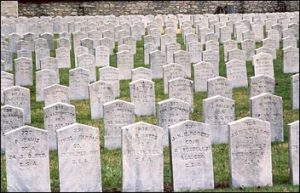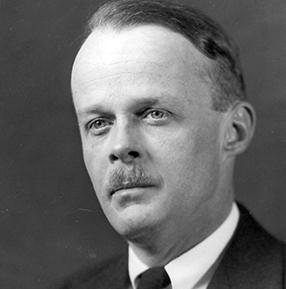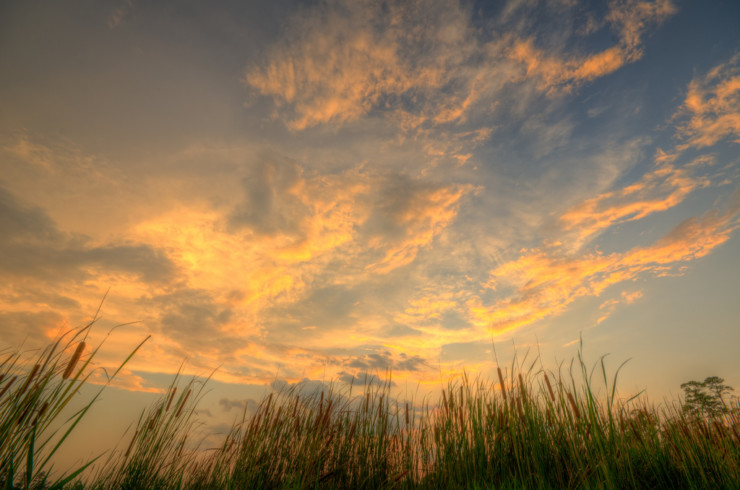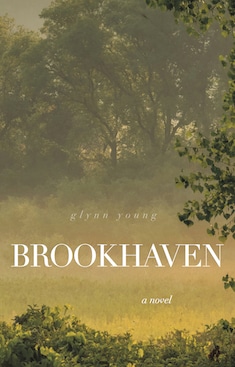I’ve been reading about the Civil War; it’s research for a writing project. If you grew up in the South, like I did in the 1950s and 1960s, the Civil War was still being fought, through the stories told by my father and grandmother, and through the rise of the civil rights movement. I could listen to family and watch news reports of protests, counter-protests, police brutality, and governors trying to prevent integration of state universities.
A great-great uncle died at the Battle of Shiloh in 1862; another died in a battle in Texas. But it was my great-grandfather who carried the main family story, because he survived to tell what happened.
Too young to enlist, he served as a messenger boy, part of a Mississippi unit that fought with General Joseph Johnston, the general who surrendered in North Carolina a few weeks after Robert E. Lee’s surrender at Appomattox. He had to make his way home to southern Mississippi on foot, and it took months across a devastated, defeated region. When he arrived, he found his family gone. His odyssey continued across Louisiana to East Texas, where he finally found them.
My father always said his family was one of shopkeepers, but my great-grandfather, like his father before him, was a farmer, according to the 1850, 1870, and 1880 censuses. They never owned slaves; they were true small farmers in a county that straddled the Louisiana border.

Camp Chase Confederate Cemetery, Columbus, Ohio
My great-grandfather was one of the fortunate ones—he survived. Many did not. For a long time, the official death toll for the Civil War stood at almost 620,000. Recently, scholars began to question that number; they now believe the death toll was closer to 750,000—more than in all the other wars America has fought combined. And it was a war that tore the nation apart politically, socially, culturally, economically, and even spiritually. The decade of Reconstruction that followed in the former Confederate states did little to heal national wounds.
Legends and myths arose on both sides but especially in the South. The war had been about “the Great Cause,” which rather conveniently included few references to slavery. My grandmother referred to it as “the war of Northern aggression.” My school teachers, even in a former Confederate state like Louisiana, took a different view, teaching history rather than legend. The Civil War was about a lot of things, but first and foremost it was about slavery and protecting the social order that depended upon it.
The Civil War and its aftermath shaped Southern culture for the next century; it influenced music, literature, religion, and politics. And it influenced poetry, especially the poetry of remembrance.
Allen Tate (1899-1979) was one of so-called agrarian poets, along with John Crowe Ransom, Robert Penn Warren, and others. They defended an agrarian society, and an agrarian South, against what they saw as the rise of industrialization. In his first collection of poetry, Mr. Pope and Other Poems (1928), Tate included the poem he’s best known for—“Ode to the Confederate Dead.” The poem was also revised and included in his 1937 collection Selected Poems.
It’s a long poem, running several pages, and it was considerably influenced by the modernist poetry of T.S. Eliot. Tate considers a cemetery filled with headstones of Confederate soldiers who died in battle, in prison, or from disease. The reason they fought is buried in the decades that have passed; the tombstones and monuments themselves are decaying, so that even the memory of the memory is fading.
From Ode to the Confederate Dead (1927)

The headstones yield their names to the element,
The wind whirrs without recollection;
In the riven troughs the splayed leaves
Pile up, of nature the casual sacrament
To the seasonal eternity of death;
Then driven by the fierce scrutiny
Of heaven to their election in the vast breath,
They sough the rumour of mortality.
Autumn is desolation in the plot
Of a thousand acres where these memories grow
From the inexhaustible bodies that are not
Dead, but feed the grass row after rich row.
Think of the autumns that have come and gone!—
Ambitious November with the humors of the year,
With a particular zeal for every slab,
Staining the uncomfortable angels that rot
On the slabs, a wing chipped here, an arm there:
The brute curiosity of an angel’s stare
Turns you, like them, to stone,
Transforms the heaving air
Till plunged to a heavier world below
You shift your sea-space blindly
Heaving, turning like the blind crab.
Dazed by the wind, only the wind
The leaves flying, plunge …

Allen Tate (1899-1979)
The poem goes on for 68 more lines (you can find the entire poem online). The language is somber, evoking images of death and the past. This isn’t a memorial to the “glorious cause”; this is a recognition that death comes for all of us, just as it came for these Confederate soldiers. The passion, which Tate describes as “immoderate,” is forgotten among the falling leaves of autumn, the aging stones, the bones of young men who went shouting into battle. And yet, there is a sense of something there that needs holding on to, the values and the virtues of the land, not unlike the values and virtues articulated by Wendell Berry.
My great-grandfather arrived home to Pike County, Mississippi, in late 1865 or early 1866. Not long after, the county was divided by the Reconstruction state government and he found himself living in Lincoln County. Owning and operating a small farm would not have been easy; taxes were high, and an economy had to recover. For some years he was not allowed to vote. He married in 1868, and his wife Octavia bore seven children who survived infancy (my grandfather was the youngest). She died in 1888. At some point, he sold or transferred the land and moved to Louisiana, where he lived with one of his married daughters until his death in 1920.
My father told the story to me and my brothers, and I’ve told the story to my sons. It is our own version of “Ode to the Confederate Dead,” one that had a better ending.
Next week: Robert Lowell’s “For the Union Dead”
Related: Allen Tate reads “Ode to the Confederate Dead” (audio)
Photo by Joel Olives, Creative Commons, via Flickr. Post by Glynn Young, author of the novels Dancing Priest, A Light Shining, and the newly published Dancing King, and Poetry at Work.
__________________________

“I require all our incoming poetry students—in the MFA I direct—to buy and read this book.”
—Jeanetta Calhoun Mish
- Longfellow’s “Paul Revere’s Ride”: Creating a National Legend - April 17, 2025
- Poets and Poems: Katie Kalisz and “Flu Season” - April 15, 2025
- Poets and Poems: Michelle Ortega and “When You Ask Me, Why Paris?” - April 10, 2025


L.L. Barkat says
Glynn, thank you for bring forward what is often turned to dusty history in school texts—the people, the passions. (And, I love that you know your family’s history. And that you’re still telling it, the next generation.)
I haven’t studied the Civil War beyond what I learned in school so very long ago. Now I am wondering… the defense of that way of life that you mention… who were the defenders? I mean, the ones on the battlefields. Did the large plantation owners send their families into battle as well?
I’d also love to hear your thoughts on how much you think this divide still exists deep in the fabric of things, though at this point there’s been mobility between north and south due to the way people take jobs and change regions with fair regularity.
Glynn says
L.L. – the wealthy planter families were a tiny minority who had an outsized role in politics and the social order. There’s no question that this class led the South into the Civil War, but the men who signed up went, for the most part, willingly. I don’t think they saw themselves as defending the planter class; it had more to do with state identity, regional identity, and what was perceived as a threat to the established order. (This doesn’t mean they were morally right; it is more about what people believed and what motivated them.)
One thing I’ve found to be be fascinating — the Irish emigrants who fought for the Union. Many signed up willingly; many did not. Considerable research has been done into the ships docking in Boston and New York where Irish emigrants — thinking they had come to make a new life — were herded off the boats and directly into forced military enlistment centers.
I’m currently reading about Sherman’s march through Georgia. The author maintains it wasn’t as devastating as what people believe, although he does acknowledge that firing cannons into buildings where women and children had taken refuge was a bit over the top. What followed Sherman’s army was likely even more of a problem — bands of deserters and criminals who came pillaging and looting what was left.
Horror and atrocity are, unfortunately, features of all wars. It seems especially harsh when it’s a civil war, although I don’t think there was anything civil about our own Civil War.
Glynn says
And as for the current political divide, my now understanding is that it’s not strictly a replay of “North versus South,” although there are some geographic similarities. In some ways, a geographic divide is easier to deal with. We have a deep and possibly abiding cultural divide. If you look at a political map of my own state of Missouri, you see a red state, with three blobs of blue — the City of St. Louis, Kansas City, and Columbia, the home of the University of Missouri — and one purple county — my own St. Louis County. Geography doesn’t explain it; values, culture, income, and economic activity explain more. Missouri is not unusual in that regard; consider Illinois, with a huge blob of blue with Chicago and its suburbs and red for most of the rest of the state.
L.L. Barkat says
Regarding the current divides, I’m especially interested in the idea of city/suburbs that you begin to suggest, and I’m wondering if that gets replayed on a larger national scale, in the sense of “more people/fewer people” being the actual dynamic.
To that end, I went back to a map that my kids made to show the results of a recent election in more nuanced terms. It’s geographically interesting along the lines not of north and south but of coasts to core (with some interesting exceptions (see, as you say, Illinois). I wonder if anyone has done a university map, as well. Would be interesting to see.
Here’s the map (and the only almost pure red thing on it is Wyoming, with West Virginia a close second. 🙂
https://www.tweetspeakpoetry.com/wp-content/uploads/2018/07/true-colors-map-visualization-and-explanation.png
L.L. Barkat says
And, sadly terrible about the Irish. They had such a hard lot of it here. Built much of the Brooklyn Bridge, too, I understand, which (for the underground part especially) was hellish work.
Love this book about the building of the bridge:
https://www.amazon.com/Brooklyn-Bridge-Lynn-Curlee/dp/0689831838/ref=sr_1_1?s=books&ie=UTF8&qid=1530547522&sr=1-1&keywords=9780689831836#reader_0689831838
I wonder if there ever was an immigrant group that escaped the harshness (and is that harshness always to be expected?—thinking not, depending on the type of emigrant… say, like the English to India)? Also an interesting question. Unrelated to your post. And yet, maybe not? Slavery was its own form of forced “emigration,” that came with great sorrow.
Thank you for the chance to have an intriguing conversation!